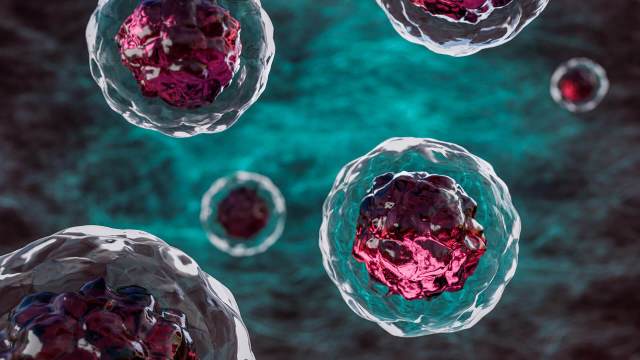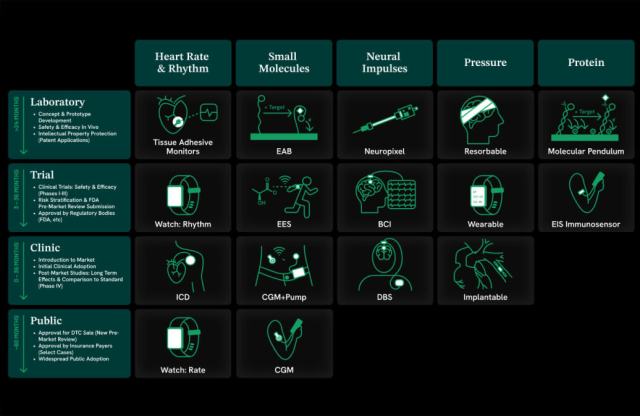February 26, 2020 · 7 min read
Fast Company: Why Patients Have Begun to Lead the Way in the Fight Against Rare Diseases
How CZI is Supporting Patient Groups to Drive Research Forward
This piece was published in Fast Company on February 26, 2020.
Several years ago, I was working in the White House Office of Science and Technology Policy where I had the privilege of helping lead the effort to develop President Obama’s Precision Medicine Initiative—an effort that aimed to catalyze a new era of medicine where patients receive the right treatments at the right time.
On the day of the launch, a young man named Bill Elder came to visit me in my office. He had bright eyes, brown hair, and a big grin on his face—all of which was remarkable, because Bill also had a rare, deadly disease called cystic fibrosis. And at 27 years old, he was about to hit the median age of survival.
Cystic fibrosis is a progressive, genetic disease that causes frequent and difficult to treat infections, and over time, limits the ability to breathe. Growing up, Bill had been able to manage some of his symptoms with therapy and medication, but he also knew that most CF patients didn’t live past their twenties. While steady advances were extending life expectancy by a few years at a time, there was no treatment that would address the root cause of his disease, and little hope that one would arrive in time to save his life.
And yet, it did—because around the time that Bill was born, a critical alignment was emerging between CF patients and researchers. The Cystic Fibrosis Foundation, founded in 1955, had spent decades organizing the patient community and building a national patient registry. That paved the way for new research—and in 1989, a team of scientists led by now-NIH Director Francis Collins identified the gene responsible for cystic fibrosis.
One breakthrough led to the next. The Cystic Fibrosis Foundation set up a clinical trial network and funded therapeutics development and drug screening efforts to search for treatments. And it worked. In 2012, the FDA approved a new, first-of-its kind treatment that addressed the underlying cause of the disease for a small subset of CF patients.
Bill was among the first five patients to receive the drug. He took his first pill before he went to bed one night in February 2012—and at about 2 a.m., he woke up with a sensation he hadn’t felt in 15 years. He could breathe through both nostrils. Not only that, he could actually smell. The drug was working, and Bill realized that his future had changed overnight.
Years later, that story still floors me. Bill now expects to live a full and healthy life. While the drug that helped Bill was initially approved for only 4% of CF patients, it opened the door to a new treatment approach that is now poised to help 90% of the community.
For me, the central lesson here is that a highly organized group of patients can play a pivotal role in accelerating medical research. Today, I’m on a quest to see how we can empower more patient communities to lead the fight against their own rare diseases.
The need is immense. Like cystic fibrosis, many rare diseases are deeply debilitating, if not deadly. And although they are individually rare, they are remarkably common. Experts believe there are at least 25 to 30 million Americans living with a rare disease, and roughly 400 million worldwide.
Unlike cystic fibrosis, though, for the vast majority of the world’s rare diseases treatments are not yet in sight. In fact, 95% of diseases do not have an approved treatment. The reasons are multifold: from difficulty identifying patients for studies to difficulty collecting patient data, from a lack of awareness to a lack of funding to support research.
What this means is that there are hundreds of millions of rare disease patients, half of them children, who are left with little hope. Their disorders might be every bit as threatening as a common cancer or heart disease—or more. But for the vast majority of these diseases, the science isn’t moving forward fast enough. Thirty percent of children with a rare disease die before their fifth birthday.
The good news is that we don’t need to accept that kind of inequity. When patient communities have the tools and resources to organize themselves, they can dismantle the barriers to medical research—and drive progress toward treating even the rarest diseases.
In fact, this is already happening. David Fajgenbaum is a medical professor who has Multicentric Castleman disease, a rare and deadly immune disorder. Little was known about Castleman disease when Fajgenbaum was diagnosed in 2010. Patients tended to be isolated, and the research community was fractured. Fajgenbaum decided that the best hope for saving his own life would be to get the Castleman community working together.
Today, more than 1,400 patients, clinicians, and researchers are doing exactly that. Together, the Castleman Disease Collaborative Network has defined research objectives, funded projects, shared data—and deepened our understanding of the disorder. Fajgenbaum has applied those insights to his own treatment. And he has driven his disease into remission.
Other rare disease patients are building research networks and infrastructure to study their diseases. In 2007, Josh Sommer created the Chordoma Foundation, which has enabled the identification of more than 20 drug targets and launched seven clinical trials. The Tuberous Sclerosis Alliance, led by Kari Rosbeck, has enrolled more than 2,000 patients in its network and driven groundbreaking research into the disease. The list goes on.
One thing these groups have in common is the belief that they can lower the barriers to studying their diseases. Our goal at the Chan Zuckerberg Initiative is to help them.
As a first step in this project, called Rare As One, we’ve made grants to 30 rare disease organizations to support them in building patient-led research networks. In addition to funding, we will work to develop the internal capacity of these organizations to achieve their missions. We will encourage these groups to collaborate with one another, and develop a common body of knowledge about how best to build, sustain, and direct their networks. By working in partnership, we aim to develop a set of tools and resources that can be applied to the fight against many rare diseases.
We’ve also started working directly with rare disease leaders like Brian Wallach, who is building a movement to fight amyotrophic lateral sclerosis (ALS). Together, we’re identifying software tools and infrastructure that could help other rare disease communities expand their reach and achieve their priorities.
Of course, there are more than 7,000 different rare diseases, and a strategy that works for one community may not always transfer to another. But in the coming years, we hope to get to the point where any group of patients will have a basic road map they can follow—to organize their communities, define their priorities, work directly with researchers, and advance the science of their disease.
That’s a future where fewer people are losing everything to a little-known disease for which there was no hopeful path to follow. And it’s a world where there are more people like Bill Elder—who, now a young doctor himself, has dedicated his life to saving others.
###
Tania Simoncelli, CZI Science Policy director and Rare As One project lead . For the past 20 years, Tania Simoncelli has designed advocacy strategies and policy solutions to address complex issues at the intersection of science, technology, law, and ethics.
Currently, she leads Science Policy at the Chan Zuckerberg Initiative. Previous roles include positions at the Broad Institute of MIT and Harvard, the White House Office of Science and Technology Policy, the U.S. Food and Drug Administration, and the American Civil Liberties Union. In 2013, Simoncelli was named by the journal Nature as “one of 10 people who mattered” for her work in spearheading the ACLU’s successful Supreme Court case challenging the patenting of human genes.





